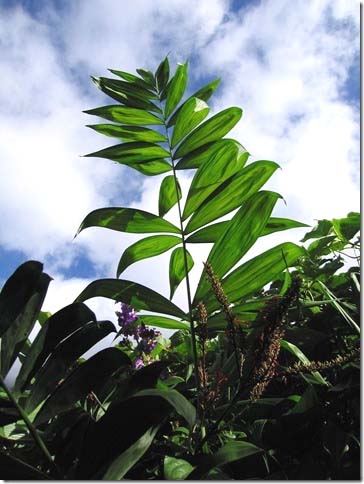Chamaedorea klotzschiana Information
Identification:
Stems solitary, 1-4 m tall and 1.5-3 cm diameter, erect. Leaves 4-6, pinnate; leaflets 12-20 per side, lanceolate to sigmoid, irregularly arranged in clusters and spreading in different planes, 20-40 cm long and 3.5-6 cm wide. Inflorescences erect, males and females with 12-20 flowering branches; fruits globose to ovoid, 0.0-1.2 cm long and 0.7-0.9 cm diameter, black, with persistent, thickened petals.
General Information:
A small, highly sought-after, solitary stemmed, collecter's palm that is endemic to the rainforests of the Atlantic slope of Vercruz, Mexico, and is listed as highly endangered Rare (IUCN 1997). The moist forests of Vercruz have been subject to ongoing pressure from anthropogenic activities that have led to a considerable reduction in forest area. Forest has been converted to various other land classes such as urban settlements, mixed agriculture, plantations and grazing.
Chamaedorea klotzschiana is now being proposed for CITES I listing together with C. amabilis, C. liebmannii, C. glaucifolia, C. elatior, C. oreophila, C. parvisecta, C. stolonifera, and C. geonomiformis. As a result the species will no-longer be commercially available, and are then likely to become extinct both in the wild and in cultivation.
Distribution:
Native to, Mexico
Atlantic slope in Veracruz, Mexico; rain forest, at 500-1250 m elevation. Very distinctive because of its clustered leaflets which spread in different planes like bow-ties. Flowering takes place between October and June.
Location: Veracruz, Mexico (19.365341°N, -96.883621°E)

